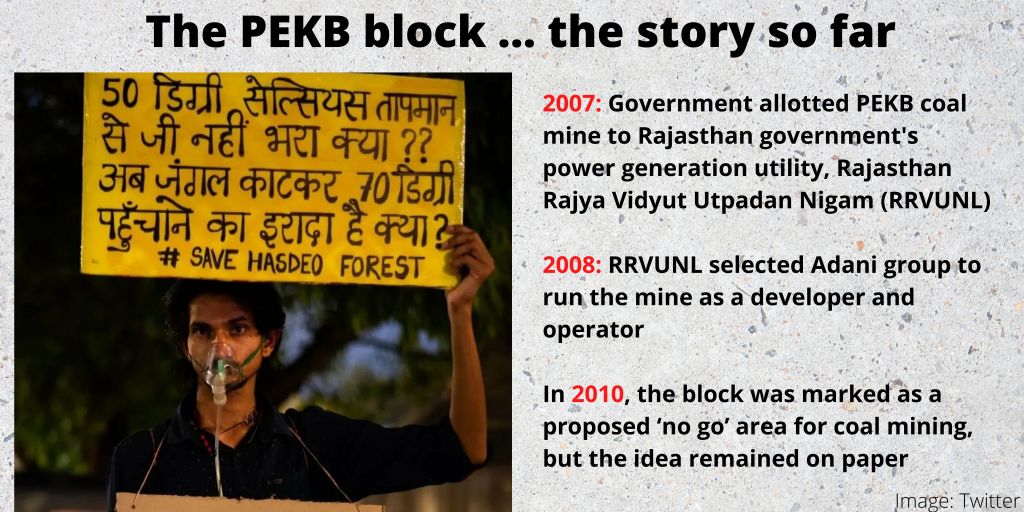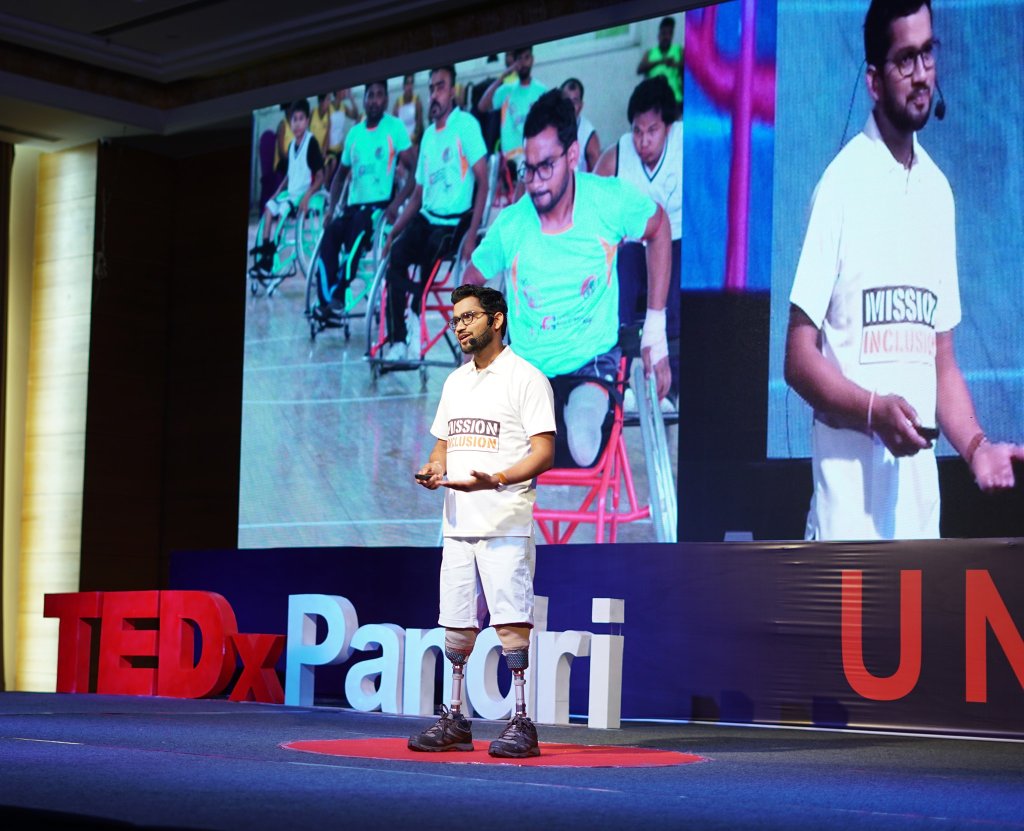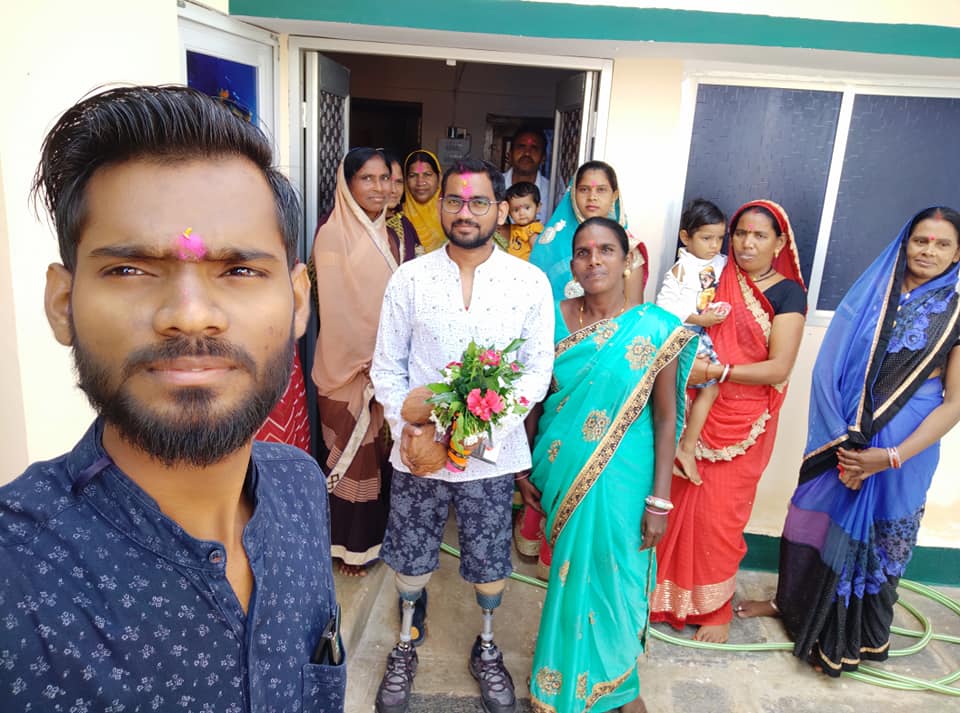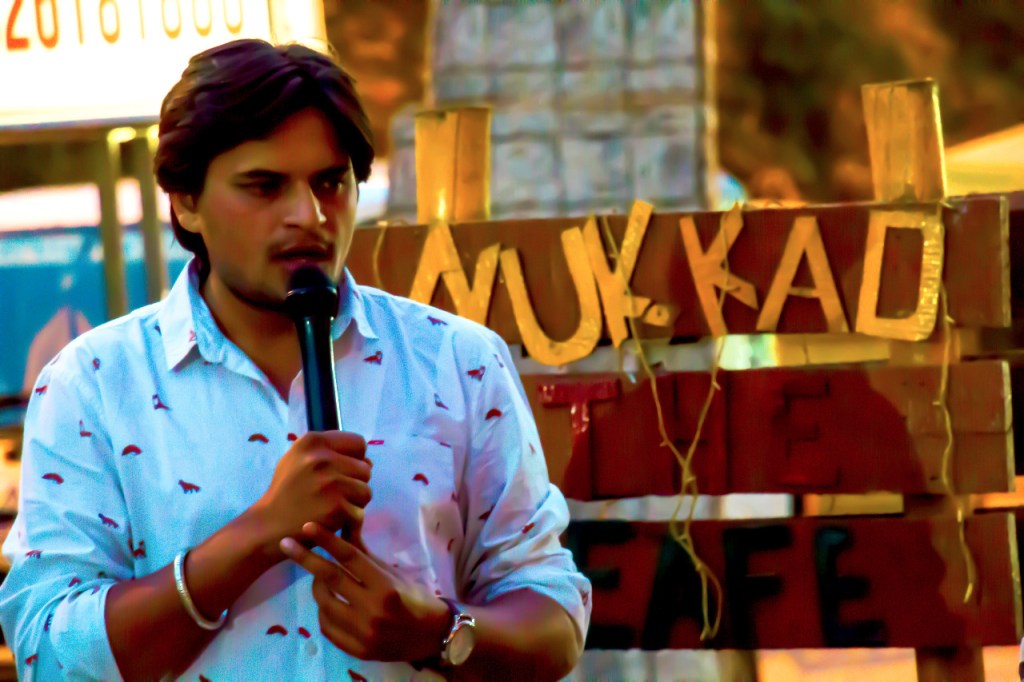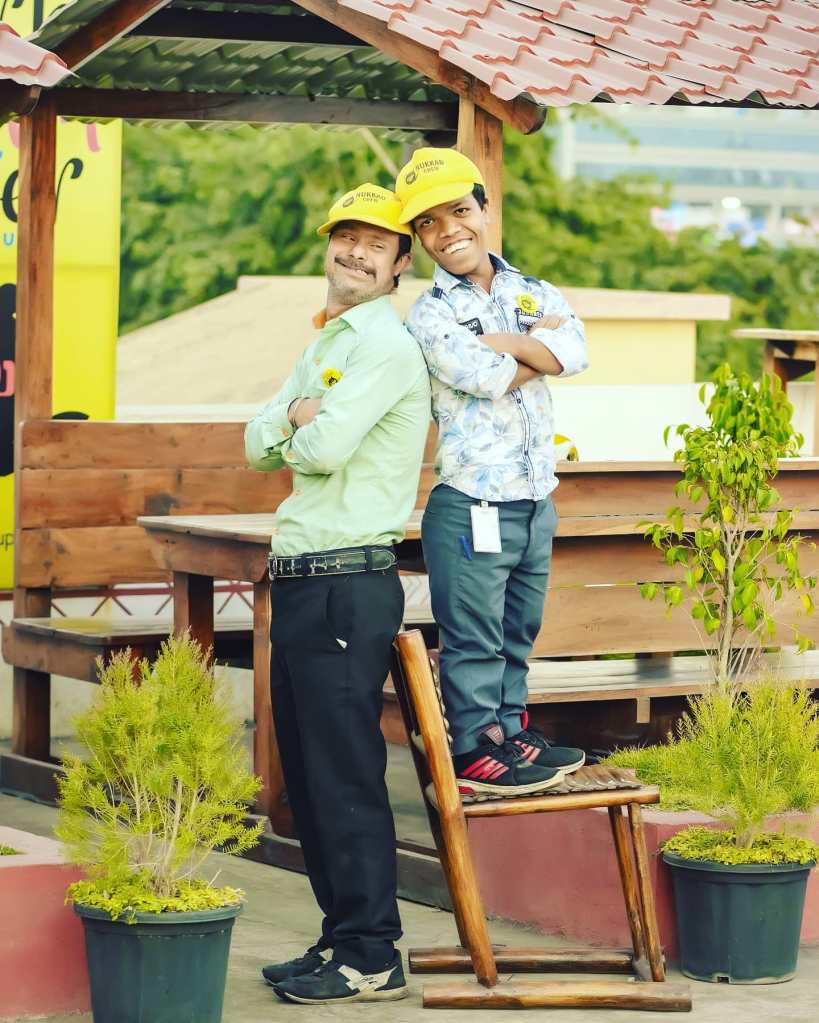The Glasgow Climate Change Conference, held in October-November 2021, listed coal and deforestation as two of the most serious causes of climate change. A few months later, in March-April this year, the Chhattisgarh government gave its final assent to mining in two coal blocks in the Hasdeo Arand region in the state. The move would result in the death of more than 4.5 lakh trees and the displacement of thousands of Adivasis. It will also have an adverse impact on the rich biodiversity. These days, illiterate Adivasis, who can’t even spell coal mining, deforestation, displacement, or climate change, have been staging a silent protest against the outlandish decision taken by learned policymakers, bureaucrats, and politicians. We spoke to various stakeholders in the state to understand why this mining drama has been unfolding for more than a decade now and the significance of the present protests.
…..
Swati Subhedar
Adivasis of Chhattisgarh have a symbiotic relationship with the forests, which are spread across 44% of the state. They are a part of the culture and tradition of the natives, and many are dependent on these forests for livelihood.
A portion of these forests is grabbing the headlines these days. Extending over 17 lakh hectares and spread across three districts of Chhattisgarh – Korba, Surguja, and Surajpur — the Hasdeo Arand region is one of the largest contiguous stretches of very dense forests in central India. The forests in the region are an important corridor for the movement of elephants and tigers and are one of the most pristine sal and teak forests in the country. The presence of many recorded species — that includes 82 species of birds, endangered species of butterflies, and 167 types of flora, with 18 labelled as ‘threatened’ — makes the region extremely rich in biodiversity.
Coincidentally, Chhattisgarh is the largest coal-producing state, and the Hasdeo-Arand Coalfield is the third largest in terms of coal reserves (17%) in the country with an area of 1,879.8 sq km. Out of the total coal-bearing area, 1,502 sq km falls in the forest. The Ministry of Coal has identified a total of 23 coal blocks in the Hasdeo-Arand Coalfield.
The Adivasis started protesting in April this year after the central and subsequently the state government granted mining permission in two of the 23 coal blocks – Parsa and Parsa East Kente Basan (PEKB). It’s the PEKB conflict that has been going on for more than a decade.
In 2007, the government of India allotted the PEKB mine to the Rajasthan government’s power generation utility — Rajasthan Rajya Vidyut Utpadan Nigam (RRVUNL). In 2008, RRVUNL selected privately-run Adani Group to run the mine as a developer and operator, the first such contract in India.
If you wish to understand the timeline of this conflict, refer to the slideshow below.
The first phase of the PEKB mining was completed in March 2022 and as per the official figure, nearly 80,000 trees were chopped. Ironically, despite several cases pending in the High Court and the Supreme Court against mining in this area, the state government gave permission to RRVUNL for the second phase of mining in PEKB in March this year. Barely 10 days later, it also gave a green signal to mining in the Parsa block.
As per the estimates, mining in these two blocks combined would lead to the chopping of more than 4.5 lakh trees (two lakh in PEKB and 2.5 lakh in Parsa). It will also lead to the displacement of thousands of Adivasis and will have an adverse impact on biodiversity.
We spoke to various stakeholders in the state to understand why the conflict has dragged on for more than a decade, the significance of these protests, and what the future holds. Unfortunately, three of the important stakeholders – trees, birds, and animals – would never be able to narrate their side of the story.

“Authorities bypassing Gram Sabhas has angered people”
The Ministry of Environment and Forest (MoEF) had way back in 2010 declared 15% area in the country as a “no-go” area for coal mining. Hasdeo was a part of this list. The drama started unfolding. In December 2015, 20 villages in the Hasdeo Arand forests held Gram Sabhas to protest against their displacement as a result of coal mining. They argued that the proposed coal mining contravened their individual and community forest rights, under the Panchayats (Extension of Scheduled Areas) Act of 1996 (PESA), the Forest Rights Act of 2006 (FRA), and the Land Acquisition Act of 2013. These laws require informed consent from Gram Sabhas before any land acquisition can take place in scheduled areas like Hasdeo.
In 2016, for the first phase of mining in the PEKB block, the government gave its consent under the Land Acquisition Act, 2013, which required a nod from the Gram Sabhas for land acquisition. However, because the Gram Sabhas have been protesting persistently, for the second phase of mining, the government bypassed the Land Acquisition Act, 2013, and granted permission for mining under the Coal Bearing Act, 1957, in which consent of Gram Sabhas is not required at all.
“It is this bypassing of laws, Acts, and norms that has angered people this time. This is the primary reason why they are protesting,” said Sandip Patel, who is based in the state capital Raipur. He is associated with a non-profit Jan Adivasi Samajik Vikas Sanstha and is closely monitoring the present protests.
He informed that in October 2021, 350 Adivasis from Korba and Surguja districts walked 300 kms from Ambikapur in Surguja to the state capital Raipur to protest against the mining projects. Yet, a few months later, in March and April, the government gave permission for mining in two coal blocks.
On April 26, Adivasi women living in Janardanpur village in the Hasdeo region started a tree-hugging protest to prevent authorities from chopping trees. Since then, Adivasis have been protesting against the government decision in several villages.
India has proven coal reserves equivalent to 111.5 times its annual consumption. “Coal reserves in Hasdeo are just 10% of coal reserves found in the entire Chhattisgarh. This is why Adivasis feel that a biodiversity-rich region like Hasdeo should not be touched,” said Patel.
He added: “The MoEF, while declaring Hasdeo as a “no-go” region in 2010, had mentioned the biodiversity factor. The latest ICFRE-WII (Indian Council of Forestry Research and Education-Wildlife Institute of India) report, which came out in 2021, has elaborated in great detail about mining being a threat to biodiversity, yet the government went ahead.”
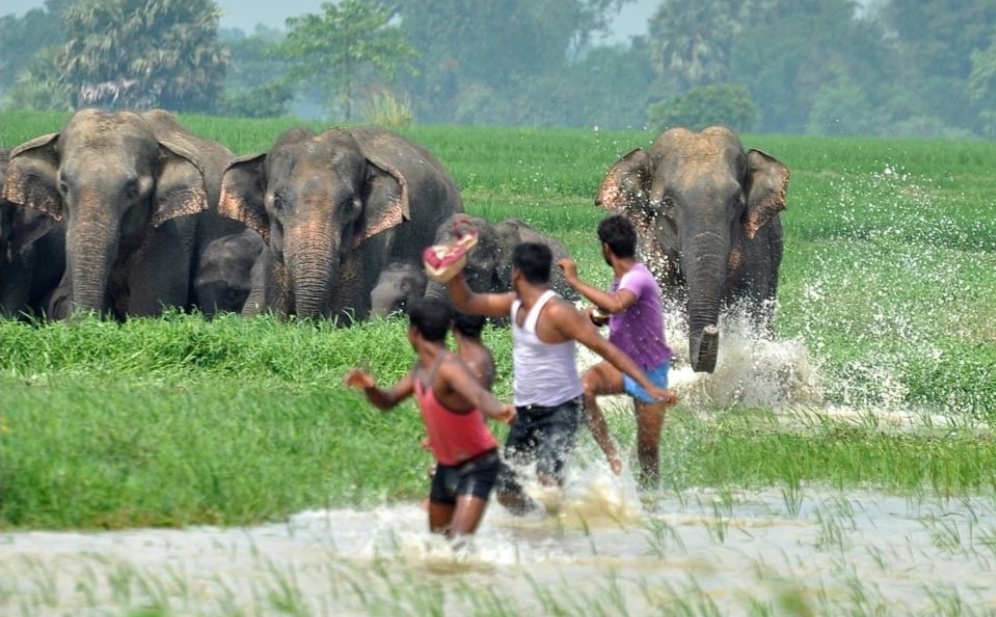
Mining will lead to more human-elephant conflicts: ICFRE-WII report
Talking about the report, an expert based in Raipur, Chhattisgarh, on the condition on anonymity, said: “It was decided in 2017 that a biodiversity assessment study will be conducted by the state government through ICFRE, Dehradun in consultation with WII for the Hasdeo-Arand Coalfield. The 277-page report highlights that over 80% of the Hasdeo Arand Coalfields and the landscape surrounding it is forested. It mentions that all coal blocks lie within the forest area and the PEKB coal block is rich in biodiversity.” He chose to remain anonymous as it’s a sensitive issue.
While elaborating on the findings of the WII-ICFRE report and the subsequent government nod, the expert said: “While issuing the clearance in October last year, the government referred to the ICFRE report, which had mentioned adverse impacts of mining in Hasdeo. However, it recommended that four coal blocks that are in the same vicinity can be considered for mining with environmental safeguards.”
On the contrary, the WII report had recommended that the entire Hasdeo area, except for the operational mines, be declared as a “no-go” area and that no fresh mines should be permitted. “It remains unclear why the recommendations of the ICFRE were taken into consideration, but those of the WII were not,” the expert added.
While the report talks about a variety of issues, it is important to highlight the issue of the human-elephant conflict in the region.
Chhattisgarh is among the states that are worst hit by the human-elephant conflict in the country, with more than 10 of its 28 districts affected. As per the state government numbers, a total of 195 people were killed in elephant attacks and 43 elephants died between January 1, 2019, and December 2021.
“The Hasdeo region is an important migratory corridor for elephants. Mining and deforestation will have an adverse impact on the routes that have been traditionally taken by these elephants and this may lead to more human-elephant conflicts,” said Nitin Singhvi, an environmentalist based in Chhattisgarh.
Below is an excerpt from the ICFRE-WII report that sheds light on the human-elephant conflict.
“… the situation of human-elephant conflict (HEC) in Chhattisgarh is a paradox with a relatively low number of elephants (less than 300, which is less than 1% of India’s wild elephant population) but higher number of incidents of HEC with over 60 humans succumbing to these conflicts every year (more that 15% of the reported human deaths due to HEC).”
In addition, the Hasdeo region is a bridge between the Kanha National Park in Madhya Pradesh and Palamu Tiger Reserve in Jharkhand. As a result of this, there have been occasional sightings of tigers. Deforestation may affect the movement of tigers between Madhya Pradesh, Chhattisgarh, and Jharkhand.

Locals are dependent on these forests for livelihood: Report
On an average, a tribal family in the state earns Rs 1-1.5 lakh in a year from the collection and sale of minor forest produce like tendu patta, mahua and chironjee that they procure from the forests. In fact, in 2020, despite the lockdown, small forest produce worth more than ₹18.63 crore was purchased from forest-dwellers and villagers in the state. The ICFRE-WII report mentions that over 60-70% of the total annual income of local communities comes from forest-based resources.
“It’s the mahua season. Each Adivasi family must have collected 4-10 quintals of mahua. They will earn a decent amount after selling this. Similarly, they manage to earn a couple of thousands by selling other forest produce like tendu patta, chironjee and sal seeds. This is our life. This has been going on for decades and for generations. Now, suddenly if they will wipe out our forests where will we go? What will we do? asked Umeshwar Singh Armo, sarpanch, Batauli tehsil in Surguja district.
He added: “The minor and major forest produce that we collect and sell in markets across the country and are even exported. So not just us, all of you are staring at losses too if our forests are chopped off.”
Comparing these forests to bank accounts, Ramlal Kariyal, who lives in a village in Surguja, said: “Just like how your money remains safe in a bank account, we feel safe in the presence of these forests that keep giving us revenues all year long. We collect mahua in one season, tendu in the next, mushrooms in the third, and it continues.”
To understand the actual impact of mining-led deforestation on Adivasis, The Good Story Project got in touch with Alok Putul, a Chhattisgarh-based journalist and an author, who has been tracking the entire conflict. He has also visited some of the villages where the Adivasis have been protesting since April this year. He said: “Deforestation and encroachment of forests by the mining companies will severely impact the forest-dwelling communities in Chhattisgarh. They are dependent on these forests for livelihood. Previously, when their land was encroached upon by the mining companies, the Adivasis could no longer collect forest produce from the forests around them as they got displaced. As a result of this, they had to move to the forest areas inhabited by other Adivasis to collect tendu leaves or mahua. Further encroachment and deforestation will create an imbalance in the region and severely impact livelihood opportunities. The Adivasis have seen what happened last time, so they are protesting more fiercely now.”

“We don’t want compensation, jobs, or new homes. We don’t want coal mining. That’s it”
Previously, when the land of Adivasis was acquired for mining, people had demanded employment and compensation as per India’s rehabilitation policy, and strict and full implementation of FRA and PESA. The compensation offered to them to vacate the land was on par with the market rate and in some cases more. Suddenly, the Adivasis a lot of money in their hands and bank accounts and they did not how to use or invest this money effectively.
“Adivasis are simple people with basic needs. They are dependent on forests for livelihood or are farmers. When they suddenly got a lot of money, to the tune of lakhs and crores, there was no one to guide them as to how to save or invest that money,” said Putul.
He added: “Some people opened small showrooms or bought shops in small towns but did not have the skills to run those, some simply spent that money on materialist things like cars and liquor. There were also instances wherein chit fund companies duped them by making them part with their money and fled and they were left with absolutely nothing.”
This time too, the government will offer them compensation, employment, and new homes, but Adivasis, who are now wiser after their past experiences want none of this. They simply want coal mining to stop.
“In all, 1,200 people in my tehsil are going to get displaced. We are not even asking for compensation or jobs. The government thinks offering jobs to some members of the family in lieu of their land is development. It’s not. This development is negligible when compared to the massive losses coal mining will bring to the region. There can never be any compensation for that,” said Armo.
Kariyal said in his tehsil three villages are going to get displaced, but this time people are not pressing for compensation or rehabilitation. They are channelizing all their energy to ensure mining stops. He added that anyway the Adivasis don’t prefer to live in the government accommodations given by the government.
“These are typical government residences built under the Pradhan Mantri Awaas Yojana. It’s difficult for Adivasis to live in such small houses as they live in the forests in huge huts. They also have to accommodate their cattle. They are not used to confined spaces. If you visit the colonies that were built for displaced people last time, not a single person lives in any of the houses. They have all left and made alternate arrangements. Besides, just providing residences is not enough. What about their education and healthcare?” asked Patel.
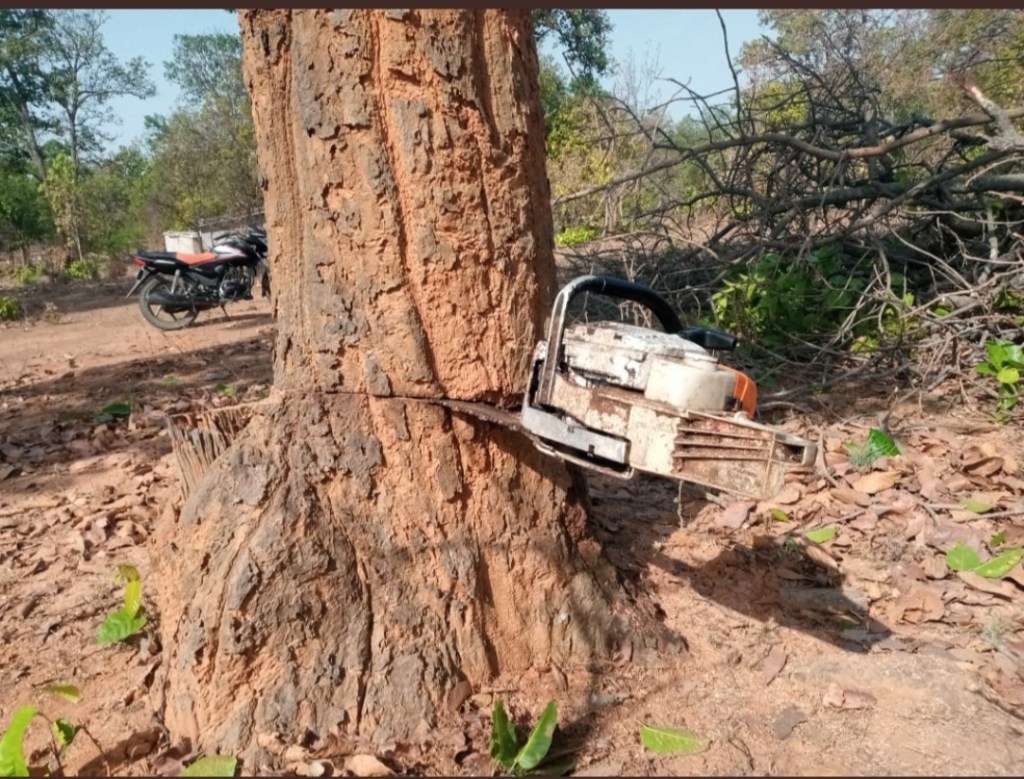
“We will continue to fight to protect our jal, jungle, zameen’
“We are already seeing elephants entering our homes and our fields and damaging crops. They have started attacking and killing people. In the future, the state government will not be able to contain the conflict. What about the endangered plants, birds, animal species and butterflies? How much more damage are they going to cause? This time we will not bend. We will continue to protest to protect our jal, jungle, zameen,” said Kariyal.
On the intervening night of April 26, some men came along with police personnel and mercilessly cut 300 trees. The Adivasis are even more guarded now.
“Why isn’t the government understanding a simple thing. The Adivasis will not gain anything from the mines. But if we let the forests flourish, they will benefit the entire humankind in the long run. There are other mining areas in the country where there are no forests. Let them come to Hasdeo when all the coal in the country gets over. This time the government will have to listen,” said Armo.
(Cover image credit: Alok Shukla, Chhattisgarh Bachao Andolan)
…..
Also read: “How will our schools in Chhattisgarh survive post pandemic?”
Also read: “We must find ways to show Adivasi ‘superfoods’ a way into our kitchens!”
We do hope that you enjoy reading our stories. We are a very small team of two; with no funding or resources to back us, and your contributions will help us in keeping this platform free and accessible for everyone. If you wish to contribute, click here.

